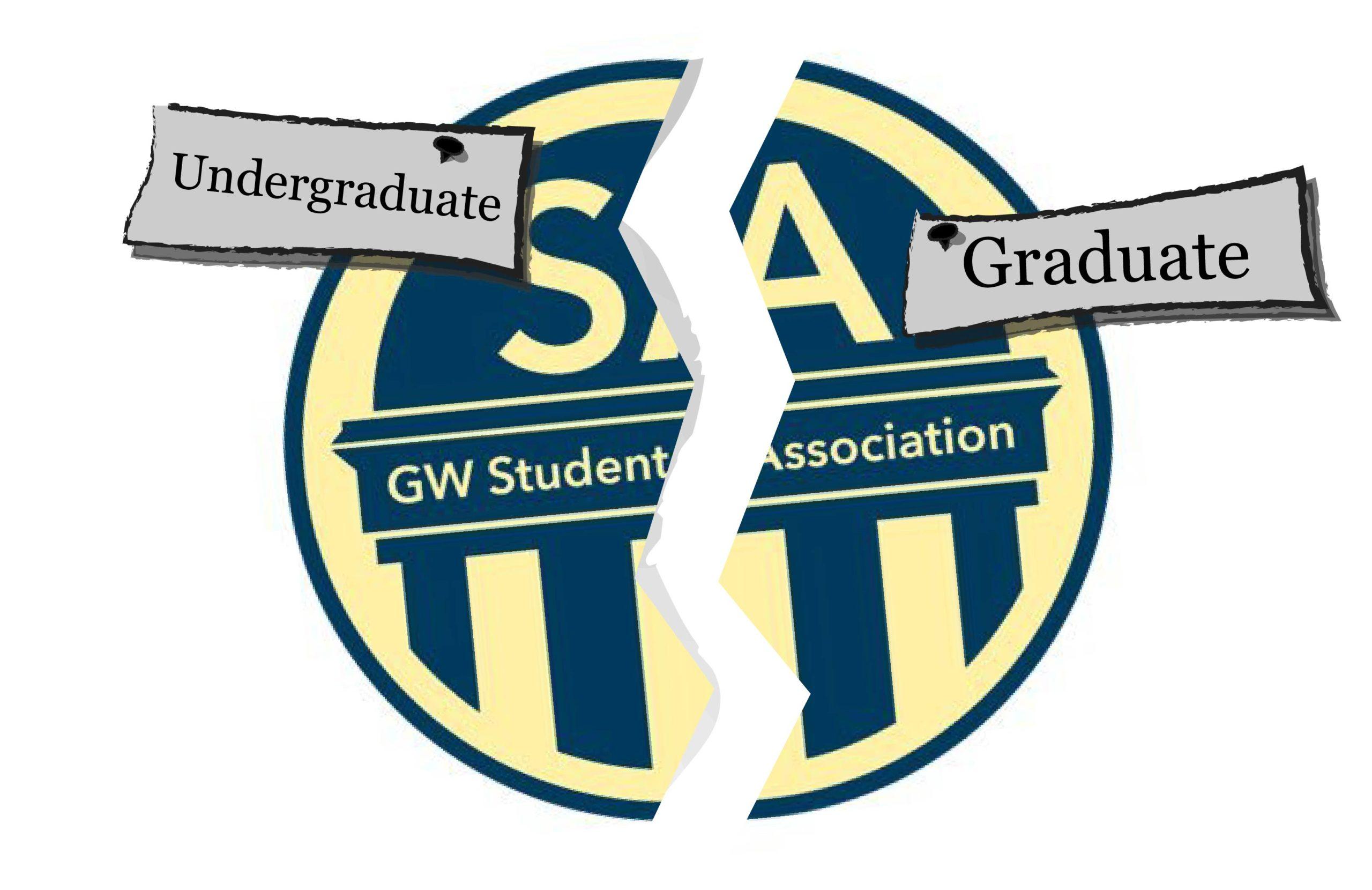In the Student Association election a couple of weeks ago, students voted for more than just the next student body’s leadership. Nearly 70 percent voted in favor of a referendum that urges the SA to be split into a graduate and an undergraduate body. The editorial board may have initially rejected the proposal, but the issue is worth investigating with a majority of student support.
Right now, the referendum leaves us with more questions than answers. The student body might want the organization to split, but what would that actually entail? What would that mean for the hundreds of student organizations – both undergraduate and graduate students – that need funds each year? These logistics were left unanswered in the referendum. It was part of the reason we disliked the idea – we couldn’t back a proposal that lacked a plan.

Hannah Thacker | Cartoonist
If the SA wants to go any further with the referendum, they need a game plan. SA leaders must spend more time detailing how the split could happen and how it would impact student organization funding.
The SA uses referendums to gauge student sentiment and ultimately show the University what students like and dislike. Votes on topics like divestment from fossil fuels and voting power on the Board of Trustees are examples of referendums the student body favored to make real institutional change. Even though this referendum was not supported by former SA Executive Vice President Thomas Falcigno and the editorial board, the SA must still take the vote of the students into account. The editorial board initially did not endorse this referendum because it was vague and did not give enough information about how student organization funding would be affected. The SA needs to outline the pros and cons of the move before it goes any further.
This split could actually benefit graduate students. The SA’s top leadership is currently held by undergraduates, and the SA has been criticized for a long time for lacking graduate student representation. Halving the organization could ultimately ensure graduate students are adequately represented and can bring their concerns to light.
On the financial side, a separate graduate SA could deal with funding for graduate student organizations only. The SA currently distributes funds to “umbrella” organizations like the Student Bar Association and the Elliott School of International Affairs’ graduate student board, which then dish out money to smaller graduate student groups. In theory, a graduate SA could allocate funds without leaning on an umbrella organization, but student leaders should still map out those logistics.
Those who support a separate graduate student SA say meeting hours are not conducive to graduate students who live different lives than undergraduates. Many graduate students commute, have jobs and are unable to convene at the hours a majority-undergraduate SA have set. Graduate students may be deterred from trekking to campus to listen to or partake in a meeting and choose to not participate for that reason.
Many issues impacting graduate students do not make it on the senate’s agenda. Graduate students have more responsibilities than the majority of undergraduate students – they need to pay rent, work for the University as a teaching assistant, do not have the ability to unionize and may have a family of their own to take care of. On the other hand, most undergraduates live on campus and face problems ranging from food insecurity to inadequate academic advising. Graduate students might deal with those issues too, but the solutions to them are addressed differently. They should not be forced to spend their time working with an organization that primarily advocates on behalf of undergraduates.
Splitting the SA is worth scoping out if the majority of students want it. But before there is follow-through, the SA needs to tell us how the change would impact the organization’s finances and how they would begin to cut the body in two.
The editorial board is composed of Hatchet staff members and operates separately from the newsroom. This week’s piece was written by opinions editor Kiran Hoeffner-Shah and contributing opinions editor Hannah Thacker based on conversations with The Hatchet’s editorial board, which is composed of copy editor Natalie Prieb, managing director Leah Potter, design editor Olivia Columbus, sports editor Emily Maise and culture editor Sidney Lee.
Want to respond to this piece? Submit a letter to the editor.

